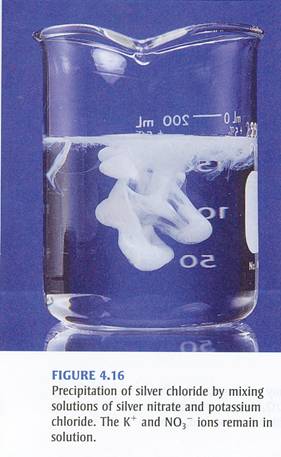Question #71943
1 Answer
Explanation:
Your starting point here is the balanced chemical equation that describes this double replacement reaction
#"KCl"_ ((aq)) + "AgNO"_ (3(aq)) -> "AgCl"_ ((s)) darr + "KNO"_(3(aq))#
This tells you that every mole of potassium chloride,
So right from the start, you can say that whichever reactant has fewer moles available will act as a limiting reagent, i.e .it will be completely consume before all the moles of the second reactant get the chance to take part in the reaction.
The problem provides you with grams of potassium chloride and grams of silver nitrate, so use the two compound's molar masses to convert them to moles
#0.5 color(red)(cancel(color(black)("g"))) * "1 mole KCl"/(74.55color(red)(cancel(color(black)("g")))) = "0.00671 moles KCl"#
#0.5color(red)(cancel(color(black)("g"))) * "1 mole AgNO"_3/(169.9color(red)(cancel(color(black)("g")))) = "0.00294 moles AgNO"_3#
So, which one of these two reactant will run out first once the reaction gets going?
As you can see, you have fewer moles of silver nitrate than of potassium chloride, which means that all the moles of silver nitrate will take part in the reaction.
On the other hand, once the moles of silver nitrate run out, you will be left with excess potassium chloride.
So, to answer your question, you have
Mind you, this value should be rounded to one sig fig, since that's how many sig figs you have for the masses of the two reactants.
#"moles of limiting reagent" = color(green)(|bar(ul(color(white)(a/a)"0.003 moles AgNO"_3color(white)(a/a)|)))#
It's worth noting that silver chloride,


